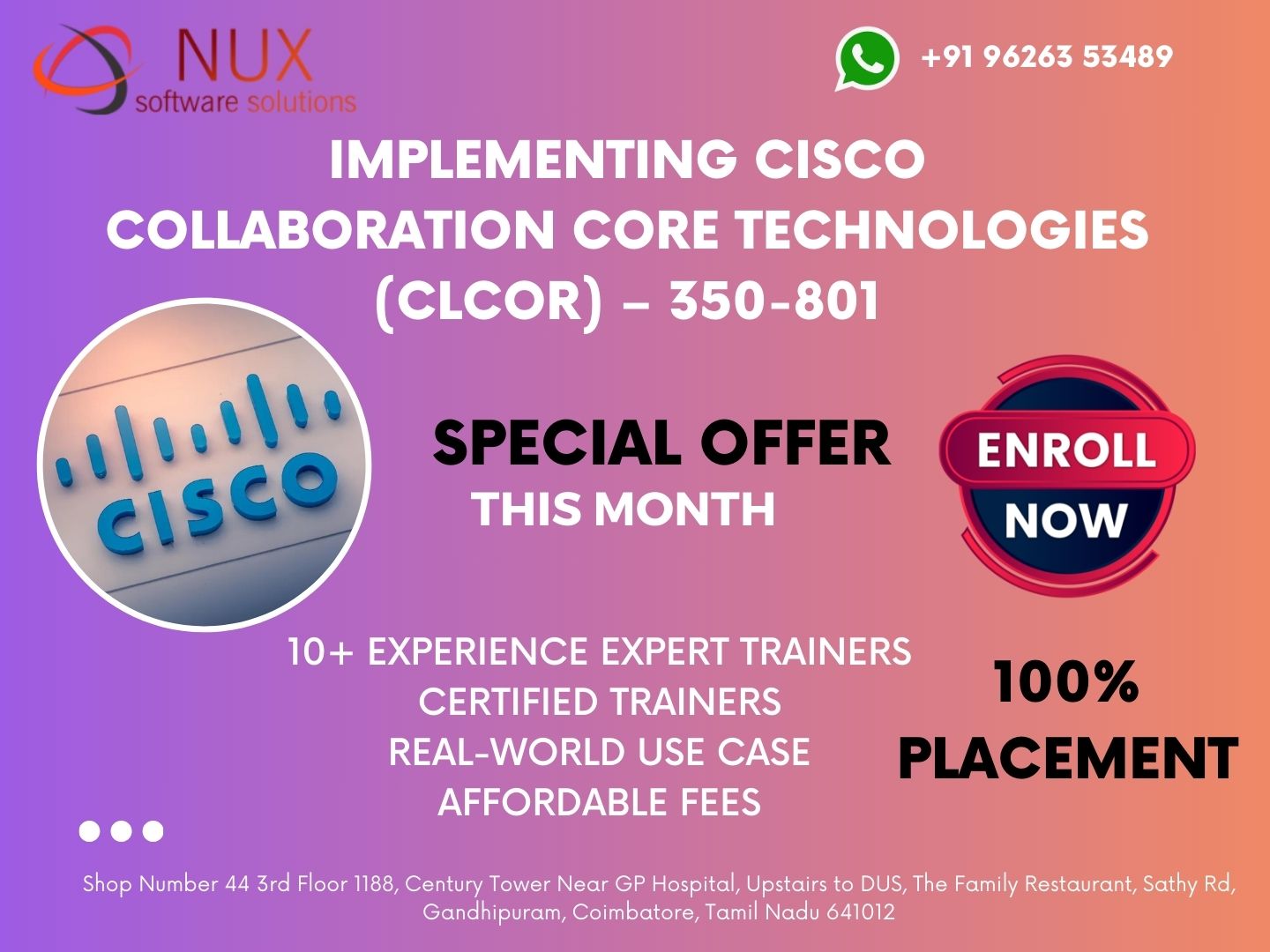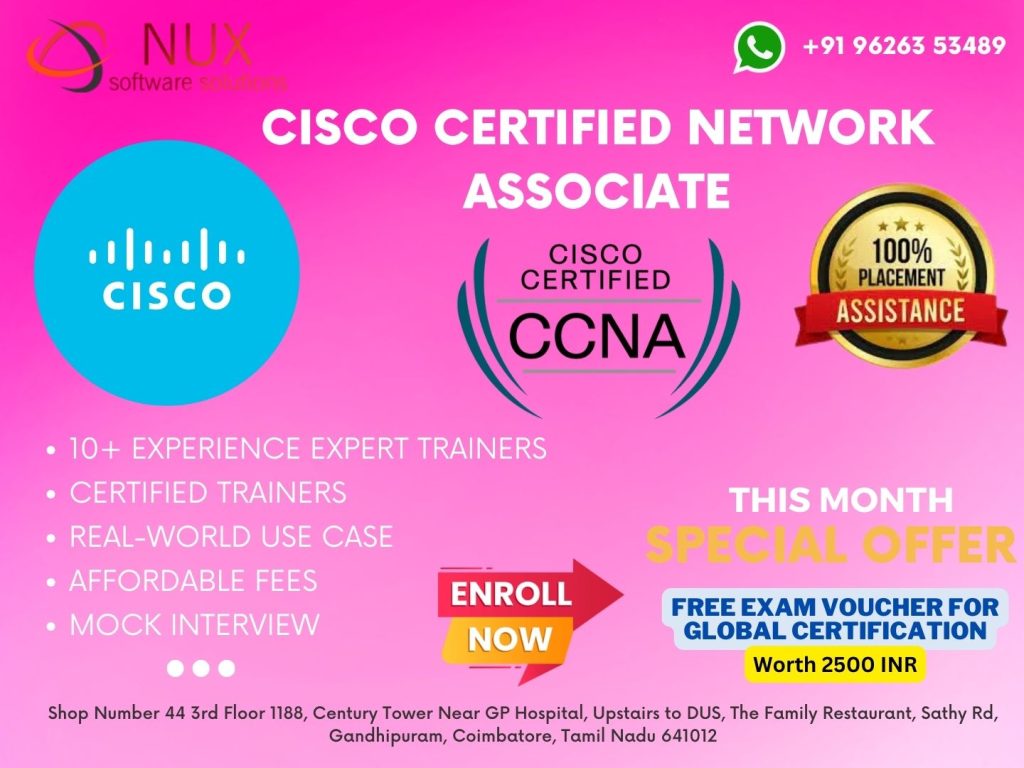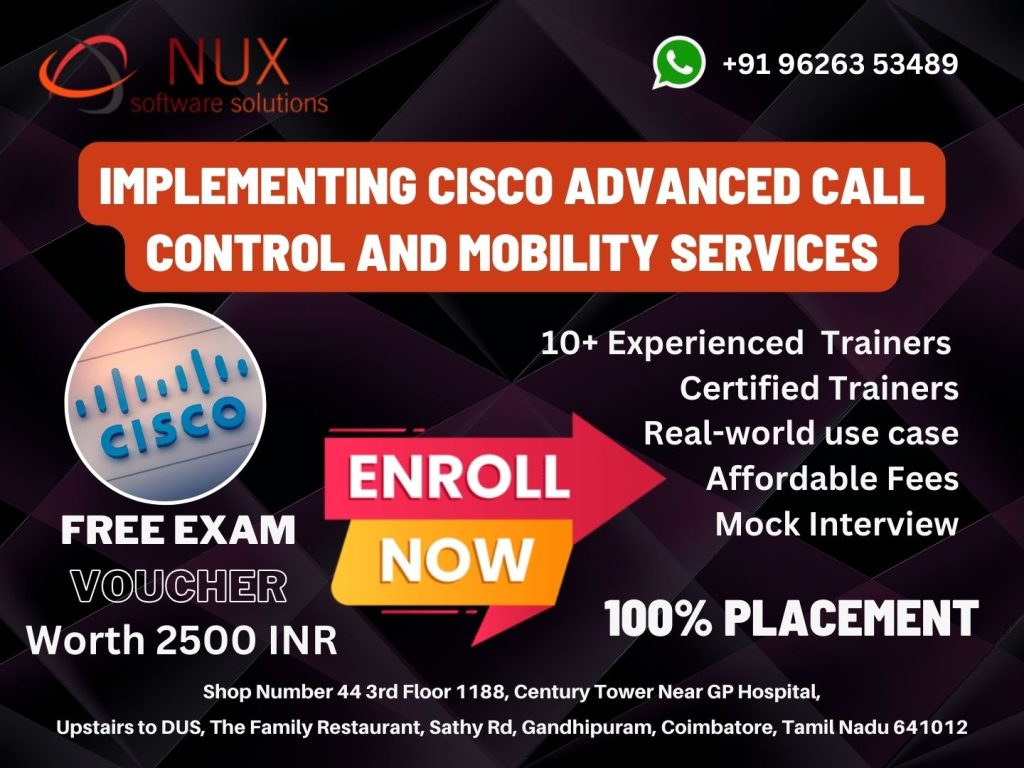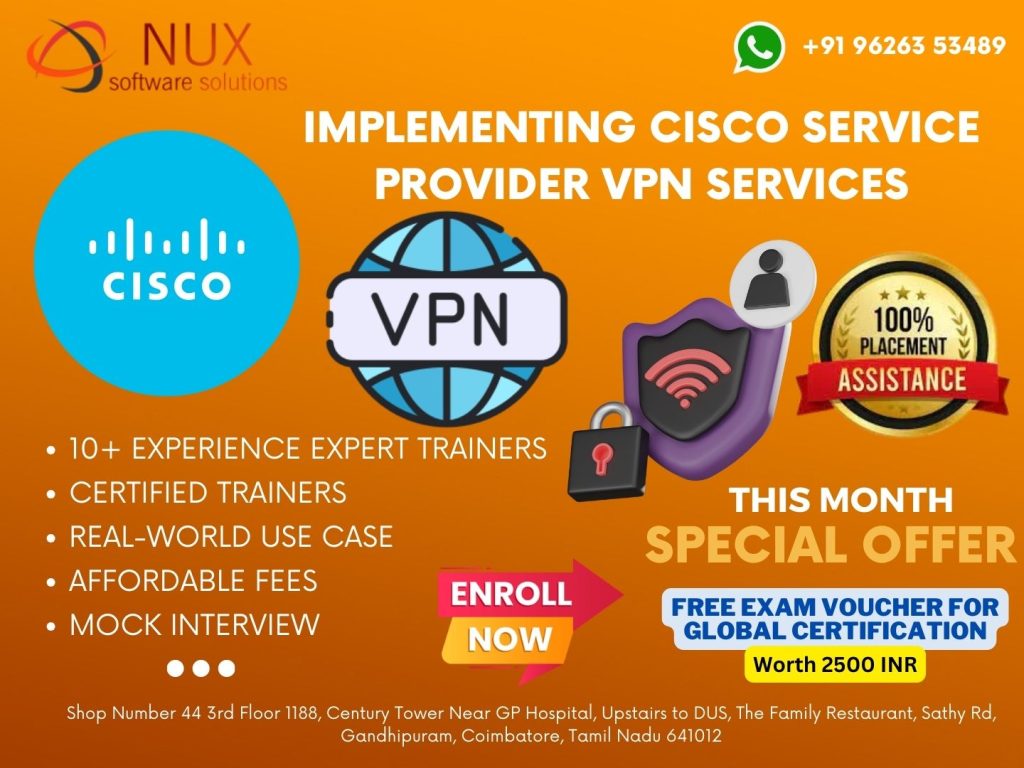Implementing Cisco Collaboration Core Technologies (CLCOR) – 350-801 Training and Certification

Cisco CLCOR 350-801 Training in Coimbatore
(Implementing Cisco Collaboration Core Technologies)
Course Overview
The Implementing Cisco Collaboration Core Technologies (CLCOR) 350-801 course is designed for IT professionals aiming to master Cisco’s core collaboration solutions. This course provides comprehensive training in Cisco Unified Communications, including call control, QoS, collaboration endpoints, media resources, and voice/video infrastructure.
At Linux Training Center, Coimbatore, our CLCOR training program focuses on both theoretical concepts and practical applications through instructor-led classes, real-time labs, and use-case-based training. The course also prepares students for the Cisco 350-801 certification exam, a core exam requirement for the CCNP Collaboration certification.
Why Learn Cisco Collaboration Technologies?
In today’s hybrid work environment, real-time collaboration through voice, video, messaging, and conferencing is essential. Cisco’s collaboration platform is widely used in enterprises globally, and professionals skilled in configuring and managing these systems are in high demand.
Learning CLCOR equips you to deploy and support unified communications solutions, enhancing workforce productivity and organizational communication security.
Who Should Take This Course?
This course is ideal for:
-
Collaboration Engineers
-
Unified Communications Administrators
-
Network Engineers and Consultants
-
Professionals pursuing CCNP Collaboration
-
IT staff managing Cisco voice, video, or messaging infrastructure
It is recommended that participants have a basic understanding of networking fundamentals, voice/video technologies, and Cisco Unified Communications architecture.
What You Will Learn
-
Core concepts of Cisco Unified Communications architecture
-
Configuration of Cisco Unified Communications Manager (CUCM)
-
Implementation of SIP, MGCP, and H.323 protocols
-
Media resource management, codec configuration, and QoS for collaboration
-
Setup and management of Cisco Unity Connection and Cisco IM and Presence
-
Integration of endpoints including IP Phones, Jabber, and Webex
-
Troubleshooting call signaling, media paths, and collaboration applications
-
Securing collaboration services through encryption and certificates
-
Enabling collaboration features like voicemail, conferencing, messaging, and mobility
All modules are supported by real-time labs, giving learners the opportunity to build, configure, and troubleshoot Cisco collaboration networks.
Course Highlights
-
Aligns with the Cisco 350-801 CLCOR exam
-
Hands-on training with Cisco collaboration tools and labs
-
Taught by certified instructors with enterprise deployment experience
-
Supports learning in hybrid formats – online or classroom
-
Prepares learners for advanced collaboration infrastructure roles
-
Acts as the foundational exam for CCNP Collaboration and CCIE Collaboration tracks
Career Opportunities
Professionals completing this course can aim for roles such as Collaboration Engineer, Voice Network Engineer, UC Specialist, or Video Infrastructure Consultant. It also serves as a required core exam for achieving the CCNP Collaboration certification, boosting your credentials in one of the most in-demand areas of enterprise IT.
Why Choose Linux Training Center, Coimbatore?
At Linux Training Center, we offer high-quality, hands-on training in Cisco collaboration technologies. With real-world lab infrastructure, expert instructors, and flexible schedules, our students gain both the skills and the confidence to manage Cisco Unified Communications environments effectively.
Implementing Cisco Collaboration Core Technologies (CLCOR) – 350-801 Syllabus
Infrastructure and Design – 20%
1. Describe the Cisco on-premises, hybrid, and cloud collaboration solution design elements described in the SRND/PA
- Licensing (Smart, Flex),
Sizing,
Bandwidth,
High availability,
Disaster recovery,
Dial plan,
Security (certificates, SRTP, TLS),
QoS
2. Describe the purpose of Edge devices in the Cisco Collaboration architecture such as Expressway and Cisco Unified Border Element
3. Configure these network components to support Cisco Collaboration solutions
- DHCP,
NTP,
CDP,
LLDP,
LDAP,
TFTP,
Certificates
4. Troubleshoot these network components in a Cisco Collaboration solution
- DNS (A/AAA, SRV, Reverse Pointer Record (PTR)),
NTP,
LDAP integration on Cisco UCM
5. Explain these components to support Cisco Collaboration solutions
- SNMP,
DNS,
Directory Connector
6. Describe Webex Control Hub features
Protocols, Codecs, and Endpoints – 20%
1. Troubleshoot these elements of a SIP conversation
- Call set up and tear down,
SDP,
DTMF,
2. Identify the collaboration codecs for a given scenario
3. Deploy SIP endpoints
- Manual,
Self provisioning,
Bulk Administration Tool (BAT),
Onboarding cloud devices,
Device onboarding via activation codes (MRA/on-premises)
4. Troubleshoot SIP endpoints
5. Describe SIP OAuth on Cisco UCM
Cisco IOS XE Gateway and Media Resources – 15%
1. Configure voice gateway elements
- DTMF,
Voice translation rules and profiles,
Codec preference list,
Dial peers
2. Troubleshoot ISDN PRI/BRI
3. Identify the appropriate IOS XE media resources
4. Describe cloud calling hybrid local gateway
Call Control – 25%
1. Describe the Cisco UCM digit analysis process
2. Implement toll fraud prevention on Cisco UCM
3. Configure globalized call routing in Cisco UCM
- Route patterns (traditional and +E.164),
Translation patterns,
Standard local route group,
Transforms,
SIP route patterns
4. Describe Mobile and Remote Access (MRA)
5. Describe Webex Calling dial plan features
- Locations and numbers,
Outgoing and incoming permissions,
Transfer and forwarding restrictions
QoS – 10%
1. Describe problems that can lead to poor voice and video quality
-
Latency,
Jitter,
Packet loss,
Bandwidth,
2. Describe the QoS requirements for voice and video
3. Describe the class models for providing QoS on a network
- 4/5 Class model,
8 Class model,
QoS Baseline model (11 Class)
4. Describe the purpose and function of these DiffServ values as it pertains to collaboration
- EF,
AF41,
AF42,
CS3,
CS4
5. Describe QoS trust boundaries and their significance in LAN-based classification and marking
6. Describe and determine location-based CAC bandwidth requirements
7. Configure LLQ (class map, policy map, service policy)
Collaboration Applications – 10%
1. Configure Cisco Unity Connection mailbox and MWI
2. Configure Cisco Unity Connection SIP integration options to call control
3. Describe Cisco Unity Connection call handlers
4. Deploy Webex App



